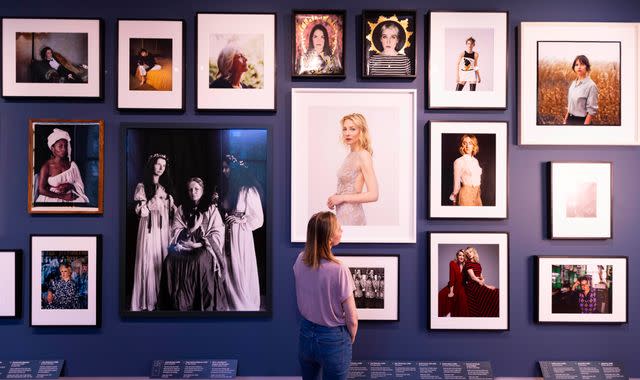Hundreds of items missing from English museums including Queen Victoria drawing and prehistoric jaw fragment

A 155-year-old drawing of Queen Victoria, a navigational aircraft computer and a jaw fragment of a reptile that lived more than 200 million years ago are among some of the 1,700 items missing from museums in England.
The National Portrait Gallery in London reported it had 45 "not located items", but insisted they are not missing or stolen.
Between 2007 and 2022, a drawing of Queen Victoria from 1869, a mid-19th century engraving of King John granting the Magna Carta, a bronze sculpture of painter Thomas Stothard, and a 1947 negative image of the wedding of the late Queen to the Duke of Edinburgh, were recorded as "not found".
The gallery, which reopened in 2023, said it still needs to complete searches for items following a three-year refurbishment and items recorded as unlocated are only 0.02% of its collection of 12,700 portraits and 164,000 images.
Most of the unlocated items are photographic negatives that have already been digitally processed and are available on the gallery's online database, the museum said.
The findings from Freedom of Information requests to museums and galleries receiving public money comes after a member of staff at the British Museum was sacked in August after jewellery and gems from its collection were found to be missing, stolen or damaged.
Here are some of the other museums that have disclosed missing items:
Victoria and Albert Museum
The world's largest museum of applied arts and design reported 180 missing artefacts including oil and watercolour paintings, a shadow puppet, false moustaches, various drawings, underpants, stockings and a mousetrap.
A V&A spokeswoman said the museum takes the protection of national collections "very seriously" and "regularly reviews our security and collection management procedures".
"This does not mean these objects have been stolen or lost, it might mean for example that a catalogue entry has not been updated after a collection move. Items are regularly recovered as a result of this process," they added.
Royal Museums Greenwich
The Royal Museums, which manages the National Maritime Museum, Queen's House, the Royal Observatory, Greenwich and Cutty Sark in east London, disclosed that around 245 items cannot be found.
Among the missing items are a navigational aircraft computer, a gun-sighting telescope, a cannonball, charts, liquid compasses, an Act of Parliament and an Altazimuth circle - which can be used for holding telescopes.
The museum said "ghost entries, the result of data transfer from more primitive databases, incorrect documentation or human error in the past" could be the cause of this.
It has found 560 items since 2008 via audits.
National History Museum
The museum in Kensington said a jaw fragment of a Late Triassic reptile dating more than 200 million years, the Diphydontosaurus, was noted as lost during a loan in 2019 and the next year more than 180 various fish were recorded as lost and a crocodile tooth was discovered stolen in 2020.
Other items like feathers, muscle and liver from short-tailed shearwater birds and fairy prions from Australia were destroyed due to improper preservation and it is unclear how many samples were lost.
A Natural History Museum spokesman said: "We take the security of our collection very seriously, so over the last 20 years we've had just 23 instances of lost or missing items from a collection of 80 million, limited to small things like teeth, fish and frozen animal tissue."
Read more:
British Museum deputy director leaving role after artefacts theft scandal
Elgin Marbles: What are they and how did they end up in the British Museum?
Science Museum
The group disclosed that two model steam trains, a King George V and a British Railways Standard 4MT class, were reported as stolen to police in 2014.
It also recorded a 1960s model of a deep-sea observation chamber, a diver's watertight torch, a resuscitating apparatus and a 19th century portrait of Joseph Marie Jacquard as missing.
A spokesman for the Science Museum Group, which houses 425,000 objects across its venues and centres, said it has begun putting barcodes on artefacts to track their locations and keep them safe.
Imperial War Museum
More than 550 objects, made up of ship camouflage drawings, British Army officer's private papers, a calendar with a photograph of former Iraq leader Saddam Hussein and currency notes, were disclosed by the Imperial War Museum when asked about missing items.
A museum spokesman said the artefacts dated before their current collections management systems were in place and were also "typically low-value, mass-produced items".
Royal Armouries
The museum in the Tower of London dedicated to arms and armour disclosed in November that a 19th century cannon from its collection was stolen from a remote and off-site location.
It was claimed to be a metal theft, meaning the cannon was thought to have been taken for its scrap value, rather than stolen as a "collection object", according to the body.
A pair of mounted sword bayonets, worth £500, also disappeared while on loan from the museum and police officers were called, and as a result, other parts of the body's collection were recalled.


